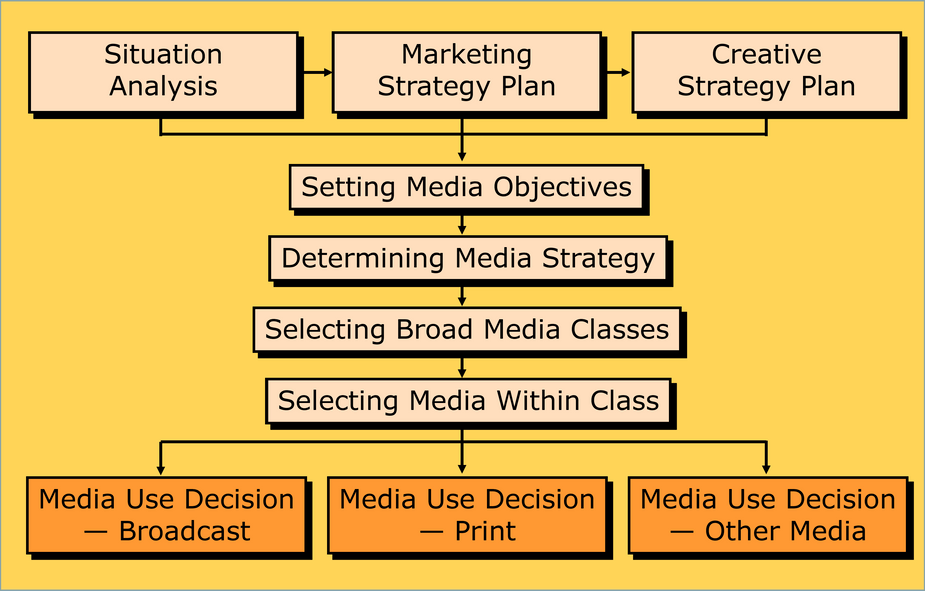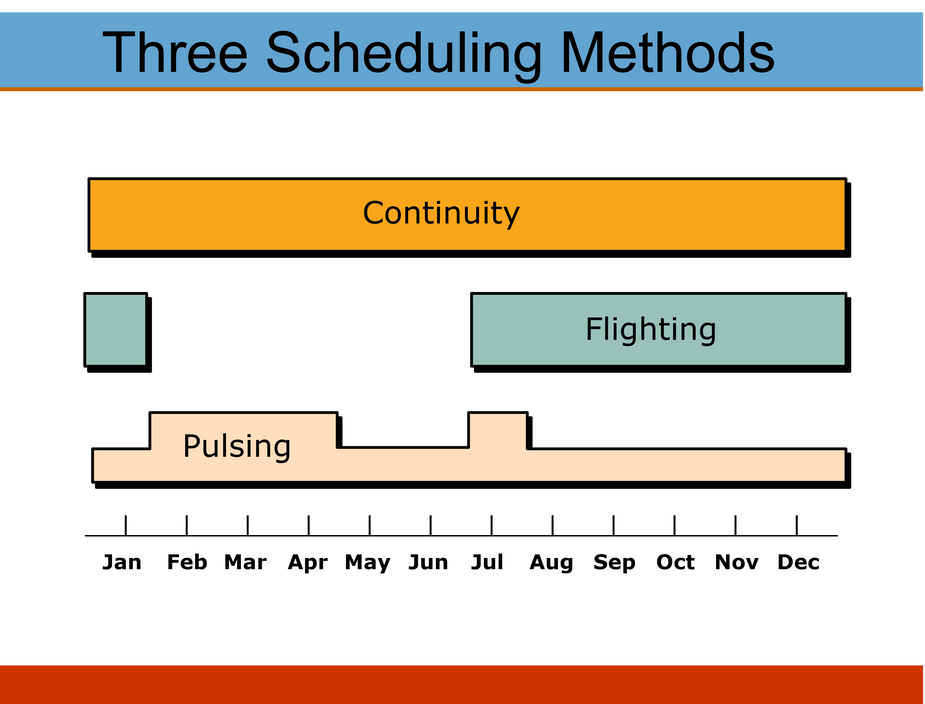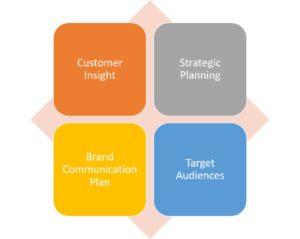Media Strategy – Reaching Your Customers Effectively

So you have created a wonderful advertisement that seems to be catchy enough to break over the din and attract attention!! Now what is important is to ensure it reaches its intended audience most effectively, for only then, it is going to serve its purpose. In order to reach the intended audience, you need to find out which media platforms your audience spends time on. In the absence of proper media research, you will simply be shouting in a crowd with no one listening to you.
Advertisements are expensive to create and unless they are delivered to their targeted audience properly, they are simply waste of precious dollars!! Hence in this article, I am going to discuss an important part of advertising planning and that is media strategy. Let’s first get acquainted to important terminology in media planning;
Media Terminology
- Media Planning – A series of decisions involving the delivery of message to the targeted audience.
- Media Objective – Benchmarks to be achieved through the advertising campaign.
- Media Strategy – Decisions on how the media objectives can be attained.
- Media – The various categories of delivery systems, including broadcast, print, outdoor media and The Internet.
- Broadcast Media – Radio, television, and other local broadcasting stations.
- Print Media – Publications such as newspapers, magazines, tabloids and periodicals etc.
- Outdoor – This category includes hoardings, gantries, kiosks, billboards and signboards.
- The Internet – The internet, through its various forms delivers an advertisement to its audience.
- Media Vehicle – The specific carrier within a medium category for example a news channel or a particular newspaper.
- Reach – Number of different audience members exposed at least once in a given time period.
- Coverage – The potential audience that might receive the message through the vehicle throughout the campaign.
- Frequency – The number of times the receiver is exposed to the media vehicle in a specific time period.

Essential Steps In Media Strategy Planning
Identifying The Target Audience
- The media planner must match the target market of the advertised product with users of specific media.
- Use syndicated data to identify the best media to use. Examples – Simmons Market Research Bureau and Mediamark Research Inc. (provides data on audience size and composition for various magazines, newspapers, cable and network TV shows, and internet sites).
- Examine rate cards and media kit information.
- Examine editorial content of media alternatives.
- The planner must identify each geographic market to be advertised in and allocate a budget to each.
- Identify and explain what variables should be considered for selecting media channels.
- Study Brand Development Index (BDI) and Category Development Index (CDI). BDI and CDI measure the sales strength of a particular brand (or product category) within a specific market relative to its sales strength in the entire country or region. Here is how we calculate these indices;
BDI = (% of a brand’s national sales coming from a market area/% of national population residing in that area)x100
CDI = (% of the product category’s national sales coming from a market area/% of national population residing in that area)x100
In the following chart we study the four possibilities that could exist for a brand in a given market;

Scheduling The Campaign
- Seasonal timing – Timing of launching an advertising campaign is very important, especially for seasonal products. Peak season, shoulder season and off season are the three different timings that can influence the timing of the campaign.
- Holiday timing – Every market has festivals, holidays, and school schedules. These schedules influence the mindset, attention and the willingness to buy the advertised products.
- Days-of-the-week timing – Working days versus weekends, mid week versus Mondays or Fridays also influence the AIDA model of advertising.
- Hours-of-the-day timing – Morning commute hours, mid day hours, evening commute hours and late evening hours, all have their influence on the minds of the targeted audience and as a result some hours may be most appropriate and other not, for running an ad campaign.
- Other factors – Other factors such special costing during peak demand times, special offers by media channels, effectiveness of media channels at specific time of the years are to be considered while scheduling a promotion campaign.

Choosing The Media Class
- Media Usage – It is important to study whether the members of the targeted audience are television watchers, newspaper readers, internet browsers or outdoor travelers etc.
- Selectivity – Must consider geographic and class selectivity.
- Lead Time – The amount of time a medium requires before the advertisement will be run.
- Creative Aspects – How well the medium supports the message appeal and style.
- Longevity – How long the ad message will last on a particular media class.
- Cost – Must consider absolute and relative costs. Here are a few costing calculations in different media classes;
Print – Cost Per Mille (CPM) = (Absolute Advertising Cost/Circulation)X1000
Broadcast – Cost Per Rating Point (CPRP) = Cost of Commercial Time/TRP
The Internet – Cost Per Mille (CPM) = (Absolute Cost of Insertion/No. of Impressions)X1000
Audience Measures
- Reach – the number or percentage of different homes or people exposed to a media vehicle or vehicles at least once during a specified period of time.
- Average Frequency – the average number of times the reached audience is exposed to the media vehicle during a specified period of time.
- Gross Rating Points – a summary measure that combines the program rating and the average number of times the home or person is reached during a specified period of time.
- Reach x Average Frequency = Gross Rating Points
Setting Reach & Frequency Objectives
- Recognize a trade off between reach and frequency given a limited budget
- How much reach? Depends on PLC stage, competition, promotions considered, budget. Conventional wisdom says between 50 and 100 percent.
- How much frequency? Conventional wisdom says between 3 and 10 exposures during a brand purchase cycle.
Related – Creativity In Advertising – Rising Above The Din
Media Comparisons
In this section we shall consider the advantages and disadvantages of every class of media channels. Here is a quick comparison of the pros and cons of each class of media channels for reference;
Television
- Pros – Mass coverage, high reach, impact of sight, sound and motion, high prestige, low CPM, ability to attract attention.
- Cons – Low selectivity, short message life, high absolute cost, high production cost, clutter.
Radio
- Pros – Local coverage, low cost, high frequency, flexible, low production cost and well-segmented audience.
- Cons – Audio only, clutter, low attention and fleeting message.
- Pros – High coverage, low cost, short lead time for ad placement, segmented audience sections.
- Cons – Short lifespan of the message, clutter, low attention, poor reproduction of artwork in the actual ad, selective reader exposure.
Outdoor
- Pros – Location specific, easily noticed and high repetition.
- Cons – Short exposure time, short ads, poor image and local restrictions.
The Internet
- Pros – User based advertising, user attention & involvement, interactive relationship, flexible message platform.
- Cons – Limited creative possibilities, Websnarl (crowded access), technology limitations.
Also Read – Understanding Advertising, Ethics & Regulation In Indian Advertising
It is however, worthwhile to keep in mind that no media channel is perfect and each one has its strengths and weaknesses. It is either best left to the judgement of the advertiser, backed by all the factors discussed in this article, or a combination of multiple channels is created to achieve maximum results!!”
“Advertisements contain the only truth to be relied on in a newspaper” – Thomas Jefferson









